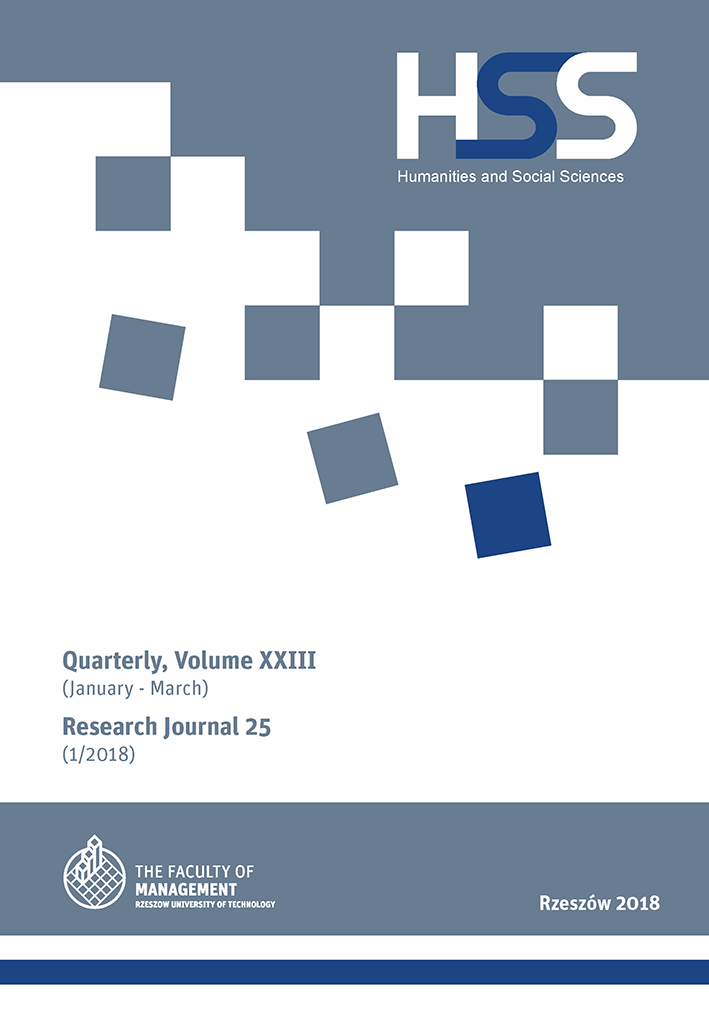Abstrakt
Wizja, w której maszyny będą podejmowały decyzje o życiu lub śmierci na polu walki staje się coraz bardziej realna. Symptomatyczne w tym kontekście wydaje się użytkowanie bezzałogowych statków powietrznych w konfliktach ostatniej dekady: w Iraku, Afganistanie, Libii, Syrii czy na Ukrainie. Zwiększająca się robotyzacja pola walki wywołuje wiele kontrowersji, szczególnie wśród organizacji pozarządowych, włącznie z postulatami całkowitego zakazu rozwoju i użytkowania autonomicznych systemów bojowych. Trwająca debata publiczna wyraźnie się zaostrza, a przyszłościowe użytkowanie przedmiotowych systemów ma zarówno swoich zwolenników jak i przeciwników. Kluczowe w tym kontekście, wydają się aspekty prawne wykorzystania autonomicznych systemów bojowych na polu walki.Treści artykułu prezentują zasadnicze podejścia w definiowaniu autonomicznych systemów bojowych. Wskazano, że na gruncie prawa międzynarodowego brak jest jednoznacznej definicji tego rodzaju środka walki. Zwrócono uwagę na brak jednoznacznego rozgraniczenia pomiędzy systemami zautomatyzowanymi, a autonomicznymi. To z kolei powoduje problemy związane z właściwą interpretacją prawną użytkowania autonomicznych systemów bojowych. Zostały również opisane dylematy potencjalnego użytkowania autonomicznych systemów bojowych w odniesieniu do podstawowych zasad międzynarodowego prawa humanitarnego: rozróżniania, proporcjonalności oraz środków ostrożności. Zasadnicza konkluzja potwierdza tezę, że obecnie funkcjonujące normy prawa międzynarodowego nie wymagają zmian w kontekście użytkowania autonomicznych systemów bojowych. Jednocześnie, konieczna jest pogłębiona dyskusja mająca na celu rozstrzygnięcie pojawiających się wątpliwości. Wiążące ustalenia powinny zapaść na forum międzynarodowym przed rzeczywistym wprowadzeniem autonomicznych systemów bojowych do uzbrojenia sił zbrojnych.
Bibliografia
AAP-6 (2014) Słownik terminów i definicji NATO, NATO Standardization Agency, Bruksela 2014.
Academy Briefing No. 8: Autonomous Weapon Systems under International Law, Geneva Academy of International Humanitarian Law and Human Rights, November 2014, https://www.geneva-academy.ch/our-projects/publications?start=10 (dostęp: 30 listopada 2017 r.).
Alston P., Lethal Robotic Technologies: The Implications for Human Rights and International Humanitarian Law, “Journal of Law, Information & Science”, Vol. 21, 2011/2012.
Arkin R.C., Governing Lethal Behavior: Embedding Ethics in a Hybrid Deliberative/Reactive Robot Architecture, Technical Report GIT-GVU-07-11 http://www.cc.gatech.edu/ai/robot-lab/online-publications/formalizationv35.pdf (dostęp: 20 listopada 2017 r.).
Asaro P. M., Modelling the Moral User, “IEEE Technology and Society Magazine”, Vol. 28, Issue 1, Spring 2009, http://peterasaro.org/writing/Asaro%20Modeling%20Moral%20User.pdf (dostęp: 20 listopada 2017 r.).
Autonomy in Weapons Systems. Directive 3000.09, U.S. Department of Defense, 21 November 2012, http://www.esd.whs.mil/Portals/54/Documents/DD/issuances/dodd/300009p.pdf (dostęp: 12 listopada 2017 r.).
Losing Humanity: The Case against Killer Robots, Human Rights Watch 2012, https://www.hrw.org/sites/default/files/reports/arms1112_ForUpload.pdf (dostęp: 12 listopada 2017 r.).
O’Connell M.E., Banning Autonomous Killing: The Legal and Ethical Requirement that Humans Make Near-Time Lethal Decisions [w:] The American Way of Bombing. Changing Ethical and Legal Norms, from Flying Fortresses to Drones, red. M. Evangelista, H. Shue, Cornell University Press, New York 2014.
Protokół dodatkowy do konwencji genewskich z 12 sierpnia 1949 r., dotyczący ochrony ofiar międzynarodowych konfliktów zbrojnych, Genewa, 8 czerwca 1977 r. (Dz. U. z 1992 r., nr 41, poz. 175, załącznik).
Report of the Expert Meeting on Autonomous Weapon Systems: Technical, Military, Legal and Humanitarian Aspects, 26–28 March 2014, Geneva, 9 May 2014, https://shop.icrc.org/expert-meeting-autonomous-weapon-systems-technical-military-legal-and-humanitarian-aspects-26-to-28-march-2014.html (dostęp: 12 listopada 2017 r.).
Report of the Special Rapporteur on extrajudicial, summary or arbitrary executions, Christof Heyns, 26 April 2013, United Nations, General Assembly, A/HRC/23/47.
Sassòli M., Autonomous Weapons and International Humanitarian Law: Advantages, Open Technical Questions and Legal Issues to Be Clarified, “International Law Studies”, Vol. 90, 2014.
Schmitt M.N., Autonomous Weapon Systems and International Humanitarian Law: A Reply to the Critics, “Harvard National Security Journal Features”, 2013, http://harvardnsj.org/wp-content/uploads/2013/02/Schmitt-Autonomous-Weapon-Systems-and-IHL-Final.pdf (dostęp: 23 listopada 2017 r.).
Schmitt M.N., Thurnher J.S., Out of the Loop: Autonomous Weapons Systems and the Law of Armed Conflict, “Harvard National Security Journal”, Vol. 4, 2013.
Sharkey N.E., The Evitability of Autonomous Robot Warfare, “International Review of the Red Cross”, Vol. 94, 2012.
Sharkey N., Towards a Principle for the Human Supervisory Control of Robot Weapons, 2014, https://www.unog.ch/80256EDD006B8954/(httpAssets)/2002471923EBF52AC1257CCC0047C791/$file/Article_Sharkey_PrincipleforHumanSupervisory.pdf (dostęp: 12 listopada 2017 r.).
Singer P. W., Wired for War: The Robotics Revolution and Conflict in the 21st Century, The Penguin Press, London 2009.
Unmanned Systems Integrated Roadmap FY2013–2038, US Department of Defense, Washington DC 2013, https://www.defense.gov/Portals/1/Documents/pubs/DOD-USRM-2013.pdf (dostęp: 6 listopada 2017 r.).
Weapons: ICRC statement to the United Nations, General Assembly, 69th session, First Committee, 14 October 2014, New York, https://www.icrc.org/en/document/weapons-icrc-statement-united-nations-2014 (dostęp: 6 listopada 2017 r.).

